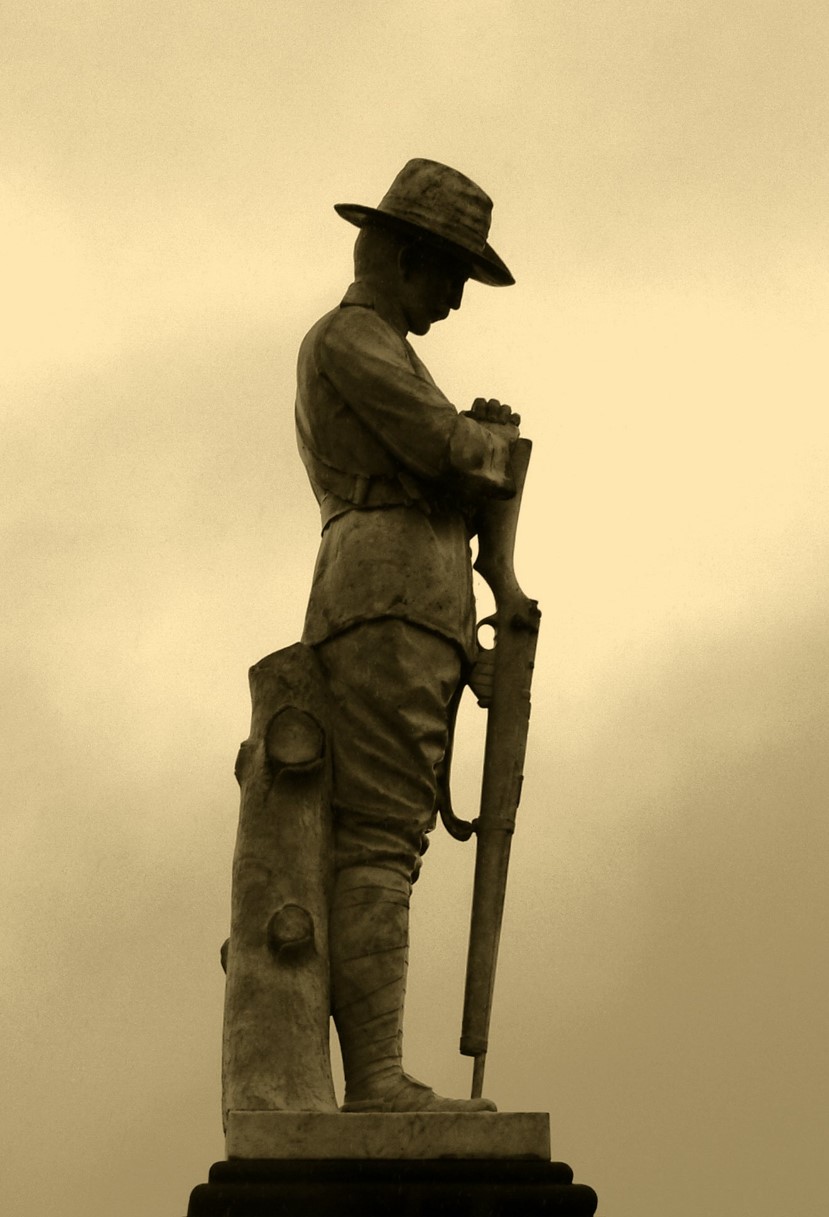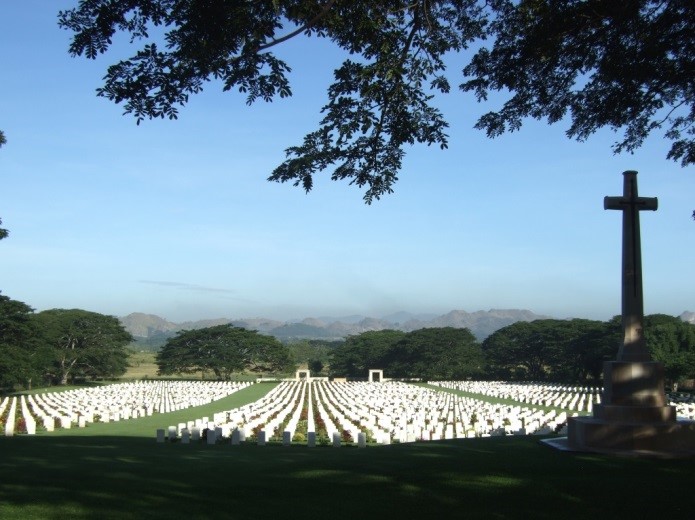Lieutenant Kelvin Reginald Boys, the son of Reginald Septimus Boys and Isabel Maud Boys (nee Munro), was born at Toowoomba in Queensland on 23rd April 1919. He was educated at the Toowoomba Grammar School. At the age of 20 years and 8 months he was mobilized into the Australian Military Force on 23rd January 1940 at Water Street, Valley, Brisbane after swearing the statutory oath of allegiance and allotted the regimental number of Q16928. At the time of his mobilization he was unmarried and a student at University where he was studying science. His physical description was that he had dark brown hair and blue eyes. He stated that he was of the Presbyterian religion. He gave his next of kin as his father, Mr Reginald Septimus Boys, residing at 101 Herries Street in Toowoomba. He attended the Chermside Camp for initial military training during the period 17th March until 14th June 1941. He was called up for full-time duty on 22nd September 1941 and allocated to the 9th Infantry Battalion.
Lieutenant Kelvin Boys attended a recruit training course at South Brisbane during the period 10th November until 27th November 1941. He was promoted to the rank of Acting Corporal on 28th November 1941. He attended a Signals Course at Lytton during the period 4th December until 15th December 1941. He was promoted to the rank of Lance Sergeant on 20th December 1941. He was commissioned as an Acting Lieutenant on 4th January 1942. He attended a course of instruction at the Northern Command Training School at Cabarlah during the period 1st March until 19th April 1942.
Lieutenant Kelvin Boys embarked for service in New Guinea on the ship “Tasman” from Townsville in Queensland on 2nd August 1942 and he disembarked at Milne Bay in New Guinea on 5th August 1942. His battalion was involved in the heavy fighting with the Japanese forces during the Battle of Milne Bay when the Japanese suffered their first land defeat in World War 2. His rank of Lieutenant was confirmed on 5th November 1942. He was evacuated to the 2nd/2nd Australian Casualty Clearing Station suffering from malaria on 9th May 1943 and transferred to the 113th Australian Convalescent Depot on 19th May 1943. After recovering from his illness he joined No. 7 Australian Infantry Brigade on 6th July 1943. He was detached for special duty in Australia on 10th July 1945 and he emplaned in New Guinea on 11th July 1943 and later that day deplaned at Townsville. He was granted 14 days recreation leave before proceeding to the 2nd Australian Infantry Training Battalion at Cowra in New South Wales on 15th July 1943. He joined the 6th Australian Infantry Training Battalion in New South Wales on 2nd August 1943. He attended the Southern Training General School Instructors Wing at Seymour in Victoria during the period 28th August until 22nd September 1943. He joined the 2nd Australian Infantry Training Battalion in New South Wales on 22nd September 1943.
Lieutenant Kelvin Boys joined No. 30 Australian Infantry Training Battalion on 20th October 1943. He was detached for duty with the 8th Australian Infantry Battalion on 15th February 1944. He was transferred to the 9th Australian Infantry Battalion on 15th April 1944. Lieutenant Kelvin Boys embarked for overseas service in New Guinea on the ship “Katoomba” on 14th August 1944 and disembarked from the ship at Madang in New Guinea on 18th August 1944. He embarked from Madang on the ship “Santa Monica” on 12th November 1944 and disembarked at Bougainville on 15th November 1944. He emplaned at Bougainville and deplaned at Nadzab on 26th April 1945. He attended the New Guinea Force School of Signals (Yalu) during the period 30th April until 11th June 1945. He emplaned at Lae on 24th June 1945 and deplaned in Brisbane on 25th June 1945. Lieutenant Kelvin Boys died of wounds accidentally received on August 17, 1945, at Torokina, Bougainville. His remains were buried in the Torokina War Cemetery on 18th August 1945. At the time of his death, Kelvin Boys was 26 years of age. After the war his remains were interred in the Port Moresby (Bomana) War Cemetery and his headstone contains the family inscription of: “Loved boy and loving son. Hope has for ever gone”.
A Court of Inquiry was held on 8th November 1945 to determine the circumstances of his death and the following report was made:
The Court concluded that Lieutenant Kelvin Boys died at 1745 hours on 17th August 1945 at the 2nd/1st General Hospital. Death was caused by a gunshot wound to his skull causing extensive brain injury. At approximately 1115 hours on 17th August, Lieutenant Boys left his tent in the officers’ lines of the 9th Australian Infantry Battalion, removed a rifle from one of the tents of the Signal Platoon (which he commanded) and proceeded to the scrub at the rear of the camp. Approximately 10 minutes later he was found lying in the grass near the edge of the scrub, lying on his left side, and with a rifle between his knees, muzzle pointing towards his head. A round had been fired from the rifle, and he suffered from a gunshot wound to his skull. There were no suspicious circumstances surrounding the death of Lieutenant Boys. The officer was on duty being on active service. There was no neglect, carelessness or failure to observe any act, regulation, order or instruction on the part of the deceased or any other person or persons, which caused or contributed to, or aggravated the injury. There is evidence of misconduct on the part of Lieutenant Boys, but in view of the report of Major Stephens, Psychiatrist attached to the 2nd/1st General Hospital, it is considered that such an act was not wilful in the accepted sense of the word, and that Lieutenant Boys could not be held responsible for his actions at the time, as he is considered to have been of unsound mind.
For his service during World War 2 he was awarded the 1939/1945 Star, the Pacific Star, the War Medal and the Australian Service Medal 1939/1945. Kelvin Boys’ name is commemorated on Panel No. 64 at the Australian War Memorial in Canberra and locally on the Toowoomba Grammar School World War 2 Honour Board.
Kelvin Boy’s photograph and the following text was published in the local newspaper:
Lieutenant Kelvin R. Boys took part in the Milne Bay campaign from August 26 to September 8, when the Japanese met their first serious setback, as Lieutenant of C Company, 9th Battalion, and was in New Guinea until the following August, when he returned to the mainland for a period. Subsequently he returned to New Guinea and later in 1944 he went to Bougainville, where he filled the position of Lieutenant in the Signal Company during the campaign there. He came to the mainland on leave during July last and returned to Torokina on August 12 just prior to Japan’s definite capitulation. He lost his life the day after the celebration of this event.
Toowoomba Grammar School archive records show that he enrolled as a day student on 30th January 1934 and that he left the School on 6th December 1935. His parent was shown as Mr Reginald Boys, Dentist, Toowoomba. Many Speech Day Prizes are awarded in his memory.
The following obituary was published in the Toowoomba Chronicle on 13th December 1945 and reproduced in the School Magazine in June 1946: On August 17, 1945, Lieutenant Kelvin R. Boys died from wounds accidentally received at Torokina, Bougainville. He was the younger son of Mr Reginald S. Boys and the late Mrs Boys, of Toowoomba, and was in his twenty-seventh year. He passed the Junior and Senior Public Examinations at this School, and was doing science at the Queensland University when the war interfered with his studies. He took part in the Milne Bay campaign from August 26 until September 8, when the Japanese met their first serious setback, as Lieutenant of C Company, 9th Battalion, and was in New Guinea until the following August, when he returned to the mainland for a period. Subsequently he returned to New Guinea and later in 1944 went to Bougainville, where he filled the position of Lieutenant in the Signal Company during the campaign there. He came to the mainland on leave during July last and returned to Torokina on August 12, just prior to Japan’s definite capitulation. He lost his life the day after the celebration of this event.




